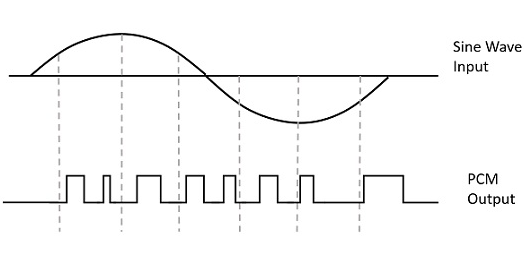
Short Note on Pulse Code Modulation (PCM)
In the fast-paced world of digital communication and network standards, the importance of efficient and reliable data transmission cannot be overstated. Pulse Code Modulation (PCM) has emerged as a transformative technique, playing a pivotal role in revolutionizing the way data is transmitted, processed, and stored. In this article, we will explore PCM’s significance in the context of digital communication and its impact on network standards.
Understanding Pulse Code Modulation (PCM)
Pulse Code Modulation, commonly known as PCM, is a digital representation method used to convert analog signals into discrete binary data for transmission and processing. The PCM process involves sampling the analog signal at regular intervals, quantizing the sampled values, encoding them into binary format, and finally transmitting the digital signal across communication channels. PCM is a cornerstone in modern digital communication, enabling the seamless exchange of data across various network standards.
PCM in Digital Communication:
Error-Free Data Transmission: One of the primary advantages of PCM in digital communication is its ability to ensure error-free data transmission. By converting analog signals into discrete digital form, PCM mitigates the impact of noise, interference, and distortion during transmission, resulting in a clear and accurate representation of the original signal at the receiving end.
Bandwidth Efficiency: PCM allows for efficient use of bandwidth in communication channels. Through quantization, the continuous analog waveform is approximated using a finite set of discrete levels. This compression of data enables the transmission of more information within a given bandwidth, making data communication faster and more efficient.
Compatibility and Interoperability: PCM has become a standardized method for data representation in digital communication. Its widespread use ensures compatibility and interoperability among various devices, systems, and network standards, facilitating seamless communication across diverse platforms.
PCM and Network Standards:
Telecommunication Networks: In telecommunication networks, PCM has become the foundation for voice communication. Telephony systems employ PCM to convert analog voice signals into digital format, facilitating high-quality voice calls over digital networks like PSTN (Public Switched Telephone Network) and VoIP (Voice over Internet Protocol).
Digital Audio Broadcasting (DAB): DAB, a standard for digital audio broadcasting, relies on PCM to transmit high-quality audio signals. By converting audio into digital form using PCM, DAB ensures superior audio fidelity and noise resistance during broadcasting.
Digital Video Broadcasting (DVB): DVB standards, used for digital television broadcasting, leverage PCM to encode and transmit video signals. PCM’s precision in data representation ensures crystal-clear video quality and optimal data compression for efficient broadcasting.
Data Networks and Internet Protocols: In data networks and internet protocols, PCM serves as the backbone for digital data transmission. By converting various types of data into digital format, PCM enables seamless integration of data across different network standards and protocols.
Conclusion
In the dynamic landscape of digital communication and network standards, Pulse Code Modulation (PCM) stands as a powerful enabler of efficient data transmission, processing, and storage. Its ability to convert analog signals into digital form has revolutionized telecommunications, digital audio, and video broadcasting, fostering unparalleled levels of data exchange and interoperability. PCM’s role in standardizing data representation and ensuring error-free transmission has cemented its place as a fundamental technology driving the digital revolution. As technology continues to advance, PCM will undoubtedly remain a crucial pillar in shaping the future of digital communication and network